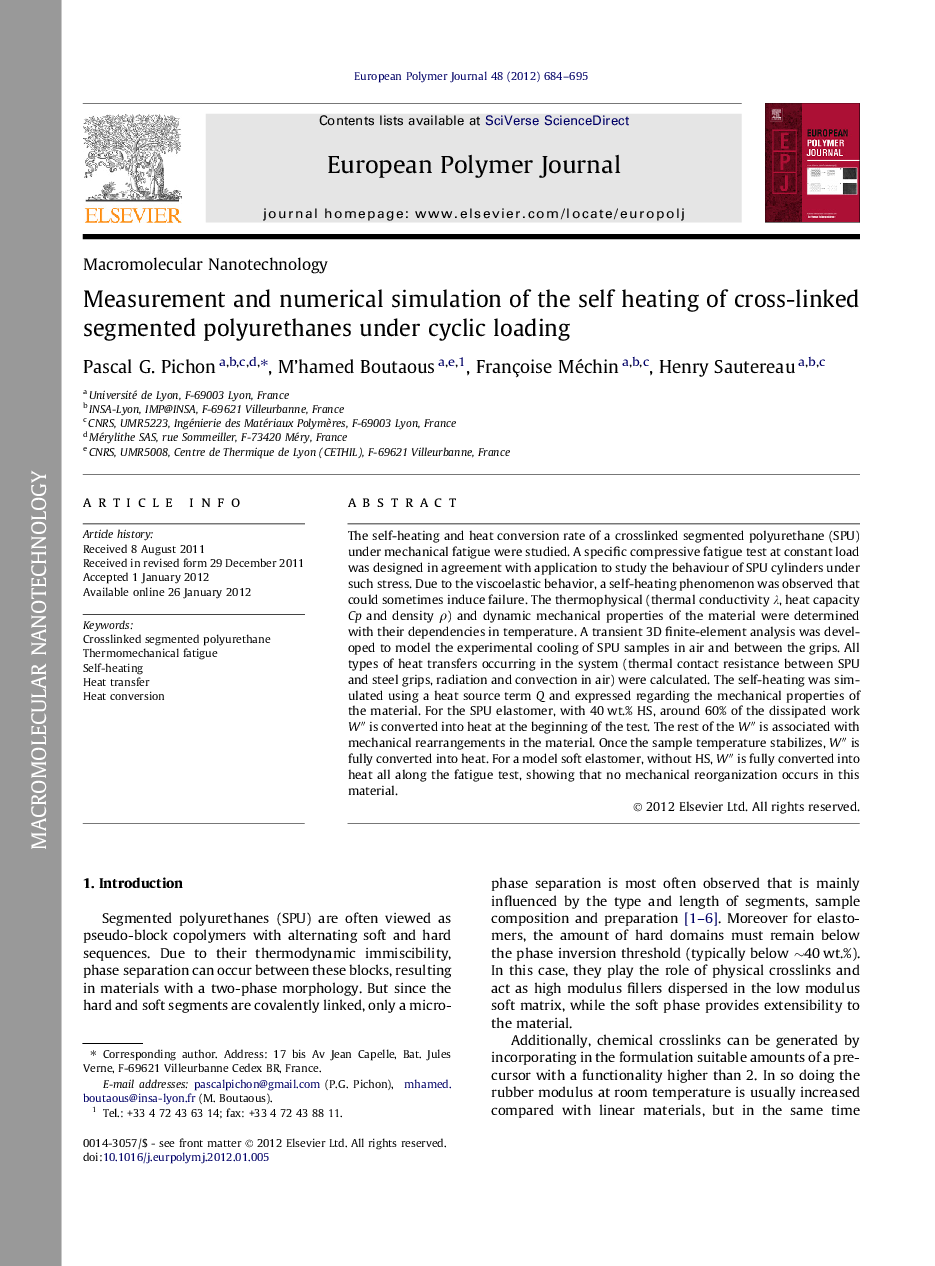| Article ID | Journal | Published Year | Pages | File Type |
|---|---|---|---|---|
| 1400599 | European Polymer Journal | 2012 | 12 Pages |
The self-heating and heat conversion rate of a crosslinked segmented polyurethane (SPU) under mechanical fatigue were studied. A specific compressive fatigue test at constant load was designed in agreement with application to study the behaviour of SPU cylinders under such stress. Due to the viscoelastic behavior, a self-heating phenomenon was observed that could sometimes induce failure. The thermophysical (thermal conductivity λλ, heat capacity Cp and density ρρ) and dynamic mechanical properties of the material were determined with their dependencies in temperature. A transient 3D finite-element analysis was developed to model the experimental cooling of SPU samples in air and between the grips. All types of heat transfers occurring in the system (thermal contact resistance between SPU and steel grips, radiation and convection in air) were calculated. The self-heating was simulated using a heat source term Q and expressed regarding the mechanical properties of the material. For the SPU elastomer, with 40 wt.% HS, around 60% of the dissipated work W″W″ is converted into heat at the beginning of the test. The rest of the W″W″ is associated with mechanical rearrangements in the material. Once the sample temperature stabilizes, W″W″ is fully converted into heat. For a model soft elastomer, without HS, W″W″ is fully converted into heat all along the fatigue test, showing that no mechanical reorganization occurs in this material.
Graphical abstractFigure optionsDownload full-size imageDownload as PowerPoint slide
